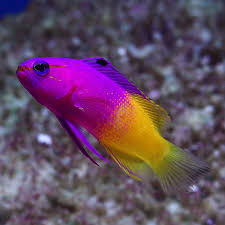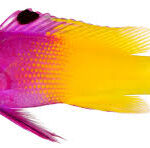The Dragon in Chinese Woodcraft Art: A Symbol of Power and Beauty

The dragon is one of the most iconic and revered symbols in Chinese culture, transcending generations and influencing a wide range of art forms. Among these, the intricate art of Chinese woodcraft stands out for its remarkable ability to capture the elegance, strength, and mysticism of the dragon in tangible forms. In Chinese woodcraft, dragons are often depicted in stunning detail, showcasing the creature’s significance in Chinese mythology and its profound connection to both spiritual and natural elements. This article explores the dragon’s representation in Chinese woodcraft art, tracing its historical roots, symbolism, techniques, and the ways in which it has evolved across different periods of Chinese history.
The Dragon: A Symbol of Chinese Culture
The dragon in Chinese mythology is not merely a fearsome creature; it is a divine being associated with power, good fortune, and cosmic harmony. Unlike the often malevolent dragons of Western folklore, the Chinese dragon is a symbol of positive forces, such as the emperor’s authority, the control of water, and the harmony between Heaven and Earth. In traditional Chinese belief, dragons are creatures of great wisdom and strength, often seen as protectors and guardians.
In ancient China, the dragon was closely associated with imperial power. Emperors were often regarded as the “Son of Heaven,” with dragons symbolizing their connection to the divine. As such, the dragon became a common motif in art and craftsmanship, representing both spiritual and material wealth, as well as the emperor’s mandate to rule with wisdom and justice.
The History of Dragon Representation in Chinese Woodcraft
Woodcraft has a long and rich tradition in China, dating back thousands of years. Wood was one of the earliest materials used in Chinese art, and the craft of carving, shaping, and sculpting wood has been passed down through generations. From everyday tools and furniture to intricate sculptures and ceremonial items, wood was a versatile medium for artistic expression. In the early dynasties, the dragon appeared in woodcraft in various forms, from carved furniture and religious artifacts to decorative panels and architectural elements.
In the Tang Dynasty (618-907), the dragon emerged as a popular motif in wooden carvings used in religious temples, palaces, and the homes of the wealthy. Dragons were often incorporated into the wooden beams, doorways, and columns of these structures, symbolizing protection and good fortune. The artistry of woodcraft reached its height during the Song Dynasty (960-1279), when craftsmen refined their techniques and created elaborate carvings that depicted dragons in dynamic, flowing poses. These representations of dragons often emphasized the creature’s association with water, especially in the context of imperial iconography.
During the Ming Dynasty (1368-1644) and the Qing Dynasty (1644-1912), the dragon motif in woodcraft became even more intricate, with wood artisans specializing in lacquerware, furniture carving, and small-scale sculptures. These artworks were highly prized, and owning furniture or decorative objects with dragon motifs was considered a status symbol, reflecting one’s connection to the imperial court and the divine forces that governed the land.
Techniques Used in Chinese Woodcraft Art
Creating a dragon in woodcraft requires a high level of skill, as it involves not only the carving of intricate details but also the understanding of symbolic representation. The dragon is often depicted in various poses, with its body coiling and twisting in a dynamic, serpentine form. Chinese woodcraft artisans use several techniques to bring the dragon to life:
- Carving: Traditional wood carving is the most common technique used in Chinese woodcraft to represent dragons. Carvers utilize fine chisels and tools to create detailed representations of the dragon’s scales, horns, claws, and serpentine body. The process requires great precision, as the intricate lines and curves of the dragon’s form must be carefully carved to reflect its fluid and dynamic nature.
- Lacquerware: Lacquer is a technique that involves applying layers of varnish over wood, followed by carving or painting intricate designs. In Chinese lacquerware, dragons are often depicted with bright colors, especially red and gold, which are believed to symbolize good fortune and prosperity. Lacquerware dragon motifs were often used in decorative panels, furniture, and ceremonial items.
- Wooden Sculptures: Chinese artisans also create three-dimensional wooden sculptures of dragons, often for use in temples or as ceremonial objects. These sculptures can be quite large, with dragons depicted in mid-flight or coiled around pillars or other elements. The sculptures are often painted or gilded to enhance their visual impact and highlight the dragon’s divine presence.
- Inlay and Intarsia: In this technique, different materials such as jade, ivory, and metals are inlaid into wooden surfaces to create complex, multi-textured designs. Dragons depicted using inlay techniques often feature highly detailed scales, eyes, and other elements, with precious materials adding a luxurious touch to the artwork. This technique was commonly used in the creation of imperial furniture and decorative items.
The Symbolism of the Dragon in Chinese Woodcraft
In Chinese woodcraft, the depiction of dragons is far from random. Each representation carries deep symbolism that reflects the dragon’s role as a celestial being, a symbol of imperial power, and a force of nature. The dragon’s coiled form, in particular, is thought to symbolize the cyclical nature of life, death, and rebirth. The dragon’s ability to control water and bring rain links it to agriculture and the well-being of the people. Additionally, the dragon is a symbol of fertility, prosperity, and good fortune, which is why it is often used in the decoration of homes and temples.
The dragon’s association with water is also linked to the element of Yin and Yang, where the dragon is considered a Yang symbol, representing strength, vitality, and activity. This balance between Yin and Yang is central to Chinese philosophy, and the dragon is an embodiment of this dynamic duality.
In woodcraft, the dragon’s five claws are often a sign of imperial authority, while the nine sons of the dragon—each representing different virtues and qualities—are sometimes featured in carvings as individual figures. These sons of the dragon include the Qiuniu (son of the dragon who loves music), Bixi (who represents strength and loyalty), and Pulao (who loves fire and is seen as a symbol of strength and courage).
The red dragon, a color traditionally associated with power and prosperity, is one of the most sought-after motifs in Chinese woodcraft, as it signifies imperial authority. The golden dragon, meanwhile, symbolizes wealth and divine protection, making it a favored design for high-status items and ceremonial objects.
The Dragon in Architectural Woodcraft
In Chinese architecture, particularly in the palaces and temples, the dragon is often carved into wooden beams, pillars, and doors. These carvings not only serve as decorative elements but also as protective symbols that ensure the spiritual well-being of the space. The palaces of the Forbidden City in Beijing, for example, are adorned with dragons in their wooden structures, symbolizing the Emperor’s connection to the divine. These carvings are intricate and often span large areas, showing the dragon in various poses—sometimes encircling a globe, flying across clouds, or rising from the ocean.
The dragon’s presence in architectural woodcraft is also found in ceremonial objects such as throne chairs, screen panels, and altar tables. These items were not merely functional but also highly symbolic, embodying the imperial power and divine mandate of the emperor.
Modern Influence and Legacy
While the use of woodcraft for large-scale dragon carvings has decreased in modern times, the tradition remains alive in smaller-scale works, such as decorative items, furniture, and sculptures. Today, many woodcraft artists continue to draw inspiration from the classic designs of previous dynasties, creating modern pieces that incorporate traditional elements. In particular, the intricate nature of dragon carvings can still be seen in the souvenirs, decorative objects, and artworks that are popular in both China and abroad.
Moreover, wooden dragon motifs are still highly sought after in feng shui, where they are used to attract prosperity, luck, and protection into the home. The dragon continues to be an important cultural symbol, and its integration into modern woodcraft allows its legacy to live on.
Conclusion
The dragon in Chinese woodcraft art is far more than just a beautiful image carved into wood; it is a profound symbol of strength, prosperity, protection, and divine favor. Through intricate carving techniques, artistic expression, and spiritual significance, the dragon has been immortalized in wood for centuries, representing the cosmic balance of the universe and the connection between Heaven, Earth, and humanity. As Chinese woodcraft continues to evolve, the dragon remains a timeless symbol of power and beauty, reflecting both ancient traditions and modern creativity in the world of art.

